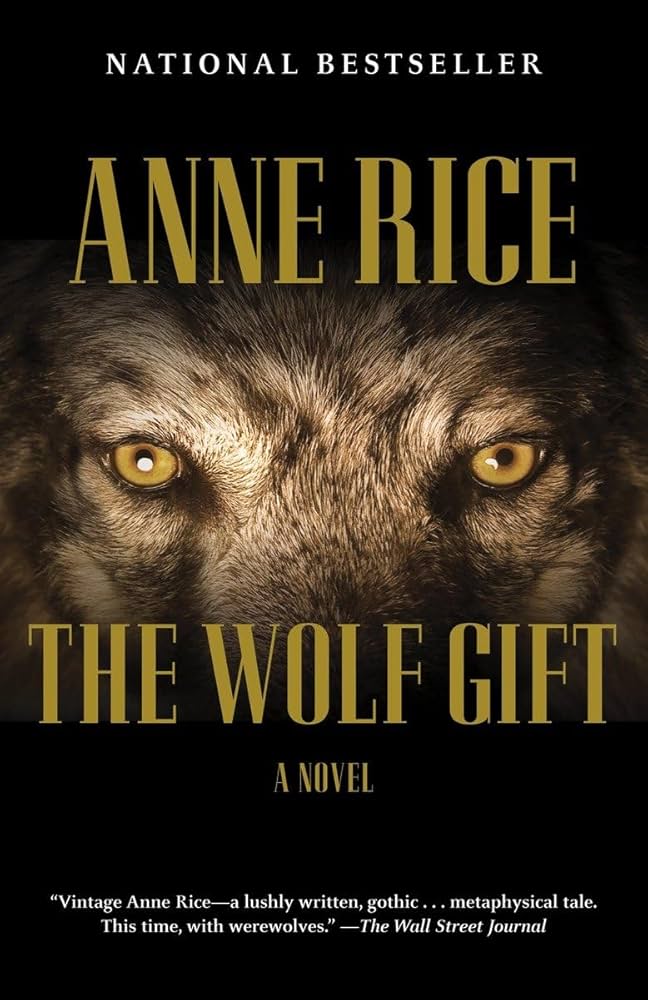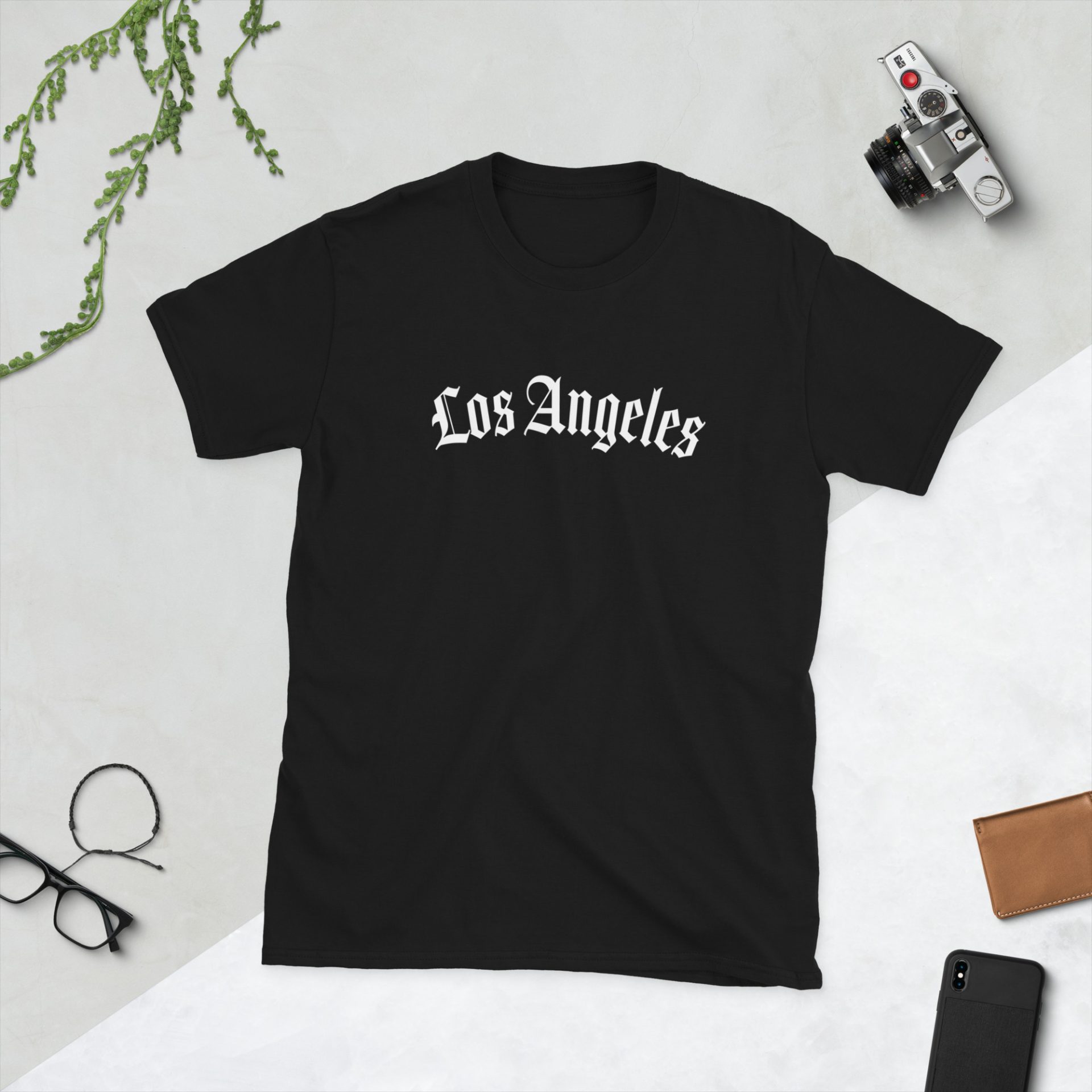Spoilers:
- Reuben turns into a werewolf.
- Reuben inherits mansion and power.
- Reuben saves people using wolf powers.
- Reuben learns about other Morphenkinder.
- Felix mentors Reuben in wolf ways.
- Reuben struggles between humanity and beast.
- Laura accepts Reuben’s wolf nature.
- Elder Morphenkinder hide secretive past.
- Police investigate werewolf-like murders.
- Reuben battles with moral dilemmas.
The Wolf Gift: Statistics
The Wolf Gift is a contemporary supernatural novel by Anne Rice. It explores the theme of lycanthropy in modern society.
Book Details
- Author: Anne Rice
- Genre: Supernatural Fiction
- Published: 2012
- Publisher: Alfred A. Knopf
- Pages: 404
- ISBN: 978-0-307-59511-9
Sales and Reception
- Initial Print Run: 250,000 copies
- First Week Sales: Approximately 24,000 copies
- Genre Ranking: Often ranks among top supernatural fiction for 2012
Reader Ratings
- Goodreads: 3.5/5 stars
- Amazon: 4/5 stars
Theme Analysis
- Lycanthropy: Explored as a metaphor for transformation and self-discovery
- Moral Ambiguity: Challenges the perception of good vs evil
Critical Response
- Positive Reviews: Praised for its rich detail and character development
- Negative Reviews: Criticized for slow pacing and predictability
“The Wolf Gift” by Anne Rice takes us on a remarkable journey into the realm of fantasy, intermingled with intricate philosophical and moral discourse. With a narrative steeped in depth and emotion, Rice crafts a world where darkness intertwines with everyday life via her protagonist, Reuben Golding, unveiling the beautiful chaos of innate human duality.Rice portrays the werewolf mythos in a fresh, yet hauntingly poetic manner, delving beyond the superficial stereotype. Golding’s metamorphosis into the mesmerizing creature challenges the reader’s perspective on conventional villain archetypes, effectively blurring the line between monster and hero, predator and prey.This novel is more than a chronicle of Golding’s life as a man and beast; it is a manifestation of Rice’s profound understanding of the human psyche, exploiting self-acceptance, identity and love, presenting a nuanced focus on horrors of a different kind—ravages of the soul, the human condition’s abyss. Her deliberate take in presenting misfits in society offers a fresh perspective on existing societal stigmas and norms, a stark, unapologetic examination of their integration into the society and individual psyche.Rice’s storytelling style is absolutely compelling. She masterfully interweaves introspective discourse within the storyline, nurturing a captivating atmosphere of suspense and intrigue that remains consistent from start to finish. Yet, amidst the pervasive darkness, she allots room for vulnerability, intimacy, and incandescent moments of human connection, the delicate balance accentuated further by her skillful language and narrative eloquence.Provocative and deeply emotional, “The Wolf Gift” is an indelible exploration of self, society and the primal instincts embedded within us. It protrudes beyond the realms of horror and fantasy, culminating into an existential analysis of human nature, an introspective journey that allows us to perceive the world with newfound sobriety. It is indeed a brilliant and unique endeavor from Anne Rice that once again attests to her unfaltering mastery of narration.
Introduction to The Wolf Gift
“The Wolf Gift” is a novel by Anne Rice, published in 2012. Known for her immersive storytelling in the gothic genre, Rice takes a new direction with this book. She revisits familiar supernatural elements, this time focusing on werewolves. The novel combines her distinctive approach with fresh themes, aiming to re-energize the werewolf narrative.
Interesting Facts and Speculations
- Anne Rice is famous for her “The Vampire Chronicles” series, but “The Wolf Gift” marks her first major foray into werewolf lore.
- The book introduces the concept of “Morphenkinder,” an aesthetic and ethical vision of the werewolf mythology.
- Speculation suggests that the book is an allegory for personal transformation and self-discovery.
Bizarre or Intriguing Elements
“The Wolf Gift” blends a contemporary setting with ancient myth, adding a unique twist to the genre. Rice’s werewolves retain their human consciousness, exploring themes of morality and power. The novel’s combination of horror and philosophical musings is intriguing, though not universally appreciated.
Public Perception Over Time
Initial reactions to “The Wolf Gift” were mixed. Fans of Rice’s previous works appreciated her storytelling skills but criticized the pacing and complexity of the narrative. Over time, some readers have reevaluated the book, noting its ambitious exploration of identity and transformation.
Despite varied opinions, “The Wolf Gift” has maintained a niche following. Readers intrigued by explorations of myth and morality find it a thought-provoking addition to Rice’s oeuvre.
Ultimately, “The Wolf Gift” stands as a testament to Anne Rice’s ability to reinvent and explore supernatural realms, keeping her audience engaged and curious.
The Wolf Gift: A Quick Beat Breakdown
Jump into the eerie world of Anne Rice’s 2012 novel, “The Wolf Gift,” with this swift and stripped-down story beat rundown.
Introduction to Discontent
Young reporter Reuben Golding is unsatisfied and yearning for something more out of life. An assignment at a mysterious mansion in the redwoods changes everything.
Mansion Mystery
Reuben visits the grand, old Nideck Point under the guise of writing an article. He’s instantly enchanted, not just by the house, but by Marchent, its captivating owner.
Brutal Transformation
The unexpected happens: a violent break-in. Reuben is bitten by a beast amidst the chaos, setting him on an irreversible path.
The Awakening
Reuben survives but wakes with new, powerful urges. He’s faster, stronger, and heals like Wolverine. Oh, and now he turns into a wolf.
First Hunt
Instincts kick in. Reuben, as the Man Wolf, takes to the night. He discovers he can sense evil, leading him to mete out vigilante justice.
Family Ties and Lies
Back in human form and wrestling with his new identity, Reuben confides in his brother. Secrets start piling up.
Love in the Time of the Wolf Gift
As if life wasn’t complicated enough, Reuben falls for Laura. Romance blooms amidst the supernatural storm brewing around them.
The Seekers of the Secret
Attention from a secret society promises answers but also danger. Reuben faces those who’ve hunted his kind for centuries.
Unraveling the Past
The truth about the wolf gift, its origins, and Reuben’s destiny begins to surface. A history filled with blood, betrayal, and a surprising lineage.
Showdown at Nideck Point
It all comes back to where it started. A final confrontation at the mansion promises to either free Reuben or condemn him to a fate worse than death.
Evolution
Reuben accepts his wolf gift, reshaping his identity and future. A new chapter begins, straddling the line between human and beast.
- Discontent leads to discovery
- A bite changes everything
- New powers, new problems
- Hunts and heartbreaks
- Secrets unlock the past and future
- Acceptance and the path forward
In “The Wolf Gift,” Anne Rice transports us into a modern gothic tale, exploring themes of transformation, identity, and the nature of humanity through the lens of the supernatural.

Analyzing “The Wolf Gift”
Story Opening
The opening of “The Wolf Gift” sets a stark, dark tone. Readers are introduced to a tense atmosphere, suggesting immediate danger and intrigue. The author employs imagery to create a vivid mental picture, drawing readers into a world that is both familiar and terrifying. The technique of starting in the middle of an action—an encounter with the supernatural—grabs attention quickly and sets the pace for the unfolding narrative.
Story Formula Breakdown
The formula of “The Wolf Gift” can be likened to a classic structure with clear elements:
- Exposition: Introduction of key characters and the setting. The initial premise is established—an ordinary world encountering the extraordinary.
- Inciting Incident: A major event disrupts the status quo. The protagonist uncovers a hidden world of werewolves and supernatural elements.
- Rising Action: Character development occurs through experiences and challenges. The protagonist navigates the struggle between humanity and the monstrous side.
- Climax: The peak of tension comes to a head. Confrontation with major themes and characters forces a reckoning.
- Falling Action: The aftermath of the climax unveils consequences. Characters adjust, and new dynamics emerge.
- Resolution: A new normal is established, reflecting the journey and transformation undergone by key figures.
Character-Driven vs. Story-Driven
The story is primarily character-driven. While there’s a plot that revolves around supernatural elements, it’s the transformation of the protagonist and his moral dilemmas that keep readers engaged. The emotional stakes are personal and layered, making readers invested in the characters’ journeys rather than just the action.
Memorable Characters
What makes the characters in “The Wolf Gift” memorable is their complexity. They’re not simply heroes or villains. They’re layered individuals who wrestle with their identities and moral choices. The readers connect to their struggles, fears, and growth. The internal conflicts and relationships add depth, making them stand out in the landscape of supernatural fiction.
Main Characters Overview
- Reuben Golding: The protagonist, a young journalist who becomes entangled in the world of werewolves. His journey of self-discovery and acceptance drives the narrative.
- Julian: A mentor figure who deepens Reuben’s understanding of his new nature. He represents both guidance and the complexity of the wolf gift.
- Dr. Vale: A figure of science and skepticism. Her engagement with Reuben adds tension between rationality and the supernatural.
- The Wolf Pack: A collective of characters representing various facets of the werewolf community. Each member has unique attributes that challenge and influence Reuben.
Story Flow Template
When writing a story flow similar to “The Wolf Gift,” consider this template:
- Opening Scene: Create immediate tension. Introduce the protagonist in a relatable yet precarious situation.
- Setting Establishment: Lay out the background. Establish the world and its rules, hinting at supernatural elements.
- Inciting Incident: Present a shocking event that alters the protagonist’s path. This moment should be pivotal and unexpected.
- Character Development: Allow the protagonist to confront their fears and weaknesses. Highlight relationships and interactions that shape growth.
- Climactic Conflict: Build toward a confrontational moment that crystallizes the main themes. Ensure stakes are high and emotions are raw.
- Resolution: Conclude with a sense of change. The world is different now, and so is the protagonist. Address lingering questions and themes.
Simple Terms of the Story
In simple terms, “The Wolf Gift” is about a journalist who transforms into a werewolf. He struggles to reconcile his dual nature while navigating a world filled with danger and mystery. The story explores themes of identity, morality, and the consequences of power wrapped in a supernatural narrative.
The Wolf Gift: Breakdown of Structure and Themes
Inciting Incident
The inciting incident occurs when Reuben Broussard, a young reporter, is attacked by a group of people while investigating a mansion. This moment transforms his reality and catapults him into a world of the supernatural.
Symbolically, this incident marks the loss of Reuben’s innocence. The mansion represents the mysteries of the unknown and the primal instincts within humanity. The attack also symbolizes a confrontation with his darker self, igniting a transformation.
Act Structure
The book follows a three-act structure.
-
Act 1: The Setup
Reuben’s normal life is established. He is a successful journalist and has a supportive family. The introduction of the mansion sets the stage, hinting at secrets and danger.
-
Act 2: The Confrontation
Reuben’s transformation begins. He struggles with his newfound abilities and the moral implications of being a werewolf. The stakes rise as he learns about the threat to his town and starts to embrace his dual nature.
-
Act 3: The Resolution
The final confrontation with the antagonist occurs. Reuben must choose between his human side and the feral instincts of the wolf. This act delivers the climax and resolution of the main conflict.
Climax
The climax happens when Reuben faces off against the true enemy, asserting his role as protector while grappling with his monstrous side. The emotional capital here is high; he battles not just an external foe but his internal demons as well. This moment is a culmination of Reuben’s journey, showcasing his character growth and the conflict between humanity and beast.
Building Tension and Release
The book builds tension through a series of escalating conflicts. Reuben’s internal struggle increases as he encounters danger and uncertainty about his transformation. Each encounter with the antagonist raises stakes and heightens fear.
Release comes in moments of high action, where Reuben uses his powers. But these are followed by lulls where he confronts the morality of his actions, creating an ebb and flow of tension. The balance between these moments keeps the reader engaged, anticipating when the next confrontation will occur and how it will affect Reuben’s journey.

The Wolf Gift Ending Explained
The ending of “The Wolf Gift” by Anne Rice reveals a transformation in the main character, Reuben, who fully embraces his identity as a werewolf. He decides to use his powers to protect the innocent and combat evil, rather than succumbing to the violence and rage that his new abilities could unleash.
How Writers Categorize the Ending
- Transformation: Reuben evolves into a hero.
- Redemption: He seeks to balance his monstrous nature with morality.
- Supernatural Resolution: The supernatural elements of the story are resolved through Reuben’s acceptance of his fate.
Symbolic, Thematic, and Speculative Meanings
The ending symbolizes the struggle between humanity and monstrosity. Reuben embodies this duality, showing that one can choose to act for good, despite having a dark side. Thematically, it explores identity and morality in the face of transformation. Speculatively, it raises questions about the nature of good and evil, especially in beings with extraordinary powers.
Loose Ends and Payoffs Resolved
- Reuben’s struggle with his new identity is resolved with acceptance.
- The fate of other characters becomes clear as Reuben takes action against threats.
- Implications of the werewolf curse are explored, providing clarity on supernatural behaviors.
Character Changes by the End
Reuben becomes more confident and purposeful, evolving from a confused young man into a protector. Other characters either accept their roles in the story or show growth in their understanding of humanity and monstrosity. They learn to adapt to the new reality of werewolves in their lives.
What Writers Can Learn from This Ending
Writers can learn the importance of character transformation. A well-crafted ending shows characters not only in conflict but evolving through their experiences. It emphasizes that the journey doesn’t end with conflict but leads to resolution and growth. This gives depth to the narrative and keeps readers engaged.
The Dialogue Style in “The Wolf Gift”
The dialogue in “The Wolf Gift” is sharp, concise, and often serves to push the plot forward. Characters communicate in a way that reflects their personalities and situations, making it engaging and impactful. Conversations are realistic but also infused with a sense of urgency, mirroring the novel’s tone.
Examples of Dialogue
Here are some examples of dialogue from the book:
- Character A: “Do you think we can trust him?”
- Character B: “In this world? Trust is a luxury.”
- Character A: “We need to decide quickly.”
These lines highlight the tension and urgency present in the narrative, showcasing how dialogue can build suspense.
Quintessential Character Moment
A quintessential character moment occurs when the protagonist grapples with their transformation. In a pivotal scene, they confront their new reality through dialogue that reveals vulnerability and strength.
Iconic Lines
Some iconic lines include:
- “I was forged in darkness, but I will not be consumed by it.”
- “Fear can be a beast, but so can anger.”
These lines encapsulate the struggle between light and dark in the protagonist’s journey.
Uniqueness of the Dialogue
The uniqueness lies in its blend of introspection and action. Characters often reflect on their situations while also engaging in high-stakes conversations. This duality keeps the reader invested.
Dialogue Density
The script leans heavily on dialogue, with many scenes balanced between exposition and character interaction. This approach makes the story feel dynamic and real.
Realism of the Dialogue
The dialogue feels realistic, full of everyday concerns, fears, and emotions. Characters speak as you would expect them to in intense situations, enhancing believability.
Lessons for Writers
Writers can learn the following lessons:
- Use dialogue to reveal character intent.
- Balance dialogue with action to maintain pacing.
- Ensure conversations reflect realistic emotions and conflicts.
Scene Walkthrough
Consider a scene where the protagonist confronts a mentor about their transformation:
Protagonist: “I can’t live like this. It feels wrong.”
Mentor: “You’re not living in fear anymore. Embrace it.”
Protagonist: “But what if I lose myself?”
This exchange reveals the protagonist’s internal conflict and the mentor’s tough love. The stakes are high, and each line contributes to character development.
This scene illustrates how dialogue can convey a character’s struggle while moving the plot forward effectively.
The Wolf Gift
In the night, shadows weave,
A howl is more than a call,
It’s the dance of sinew and sin,
Embracing the weight of a different fate.
Bones shift, and the moon grins,
A tether to wildness reclaimed,
Not blood, but a burden,
Gift or curse? Both wear the same cloak.
Man or beast, an endless inquiry,
Mirrors crack with each transformation,
Epiphanies in the pulse of the hunt,
Life captured in a fleeting instinct.
Shadows reveal hidden hierarchies,
Where fear gnashes and loyalty glimmers,
A pack, a bond, a riddle unsolved,
Within the pelt, a heart beats crimson.
Untamed, we navigate lust and loss,
The wolf knows: survival sharpens perception,
It’s not the path chosen,
But the choices, feral and fraught.
So tread softly, we are all gifted
With a howling truth in our depths,
For every wolf speaks
In the tongue of its own longing.
Unique Writing Lessons from The Wolf Gift
Anne Rice’s “The Wolf Gift” offers several insights into storytelling and writing that go beyond typical advice. Here are some lessons to take away:
-
Internal Conflict is Key
The protagonist, Reuben, shows that struggle with identity creates depth. Don’t shy away from complex inner dialogues.
-
Mythology Can Ground Your Story
Rice weaves mythology into a modern setting. Use existing myths or create your own to enhance your narrative.
-
Silence Speaks Volumes
Moments of silence or tension without dialogue can add weight to your scenes. Use pauses effectively.
-
Supernatural as Metaphor
The werewolf is not just a monster. It symbolizes deeper themes of transformation and struggle. Make your fantastical elements serve a purpose.
-
Setting Drives Emotion
The Bay Area serves as more than a backdrop; it shapes characters. Ensure your setting is a character in itself, influencing the narrative.
-
Complex Relationships Matter
Relationships in the story are multifaceted. Explore the grey areas in character interactions for realism.
-
Mix of Genres
Rice blends horror, thriller, and romance. Don’t be afraid to mix genres to create something fresh.
-
Unreliable Narrator Potential
Reuben’s perspective can be questioned. Use an unreliable narrator to create intrigue and complexity.
-
Exploring the Human Condition
The supernatural elements drive a deeper exploration of human nature. Focus on universal themes that resonate.
Discography of Anne Rice
- The Vampire Chronicles
- Interview with the Vampire (1976)
- The Vampire Lestat (1985)
- Queen of the Damned (1988)
- The Tale of the Body Thief (1992)
- Memnoch the Devil (1995)
- The Vampire Armand (1998)
- Blood Canticle (2003)
- The Lives of the Mayfair Witches
- Kate and the Mayfair Witches (1990)
- The Witching Hour (1990)
- Lasher (1993)
- Blood Canticle (2003)
- The Christ the Lord Series
- Christ the Lord: Out of Egypt (2005)
- Christ the Lord: The Road to Cana (2008)
- Other Works
- The Witching Hour (1990)
- The Tale of the Body Thief (1992)
- The Wolf Gift (2012)
- Prince Lestat (2014)
- Blood Communion (2018)
Writing Style Summary
Anne Rice’s writing style is characterized by rich, gothic prose that delves deeply into the psychological and emotional experiences of her characters.
Review 1: “The Wolf Gift refers to the werewolf ‘gift’ Ruben receives after he is bitten by an unknown creature while staying at a grand mansion in the woods. Despite its flaws, I did find the story very captivating and I liked the philosophical exploration of what it means to be a monster and whether it’s possible to keep your humanity when you become a creature of the night. But would I re-read this book? Probably not.”Source: https://www.goodreads.com/review/show/3332446910Review 2: “Rice’s feat is to make the ordinary interesting and then go one step further to lend the extraordinary an air of the mundane. Riveting, unexpected, and firmly rooted in rich storytelling, The Wolf Gift is an impressive addition to any quality library. It’s simply a delight to read a book by an author who so clearly loves the act of telling a story.”Source: https://www.goodreads.com/review/show/2210016800Review 3: “Rice weaves her customary magic in this gorgeously written novel. The author’s attention to sensory detail elucidates an entire world, deftly capturing its sights, smells, and sounds. The novel’s dedication to weaving a rich, complete, and balanced world pays off in a narrative that satisfies both intellectually and emotionally.”Source: https://www.barnesandnoble.com/reviews/wolf-gift-anne-rice/1103467678?ean=9780307700476Review 4: “Rice weaves her customary magic in this gorgeously written novel. Although it is an entertaining story, the novel lacks the depth and chilling atmosphere of her Vampire Chronicles. Some of the characters are not as well-developed as they could have been. Nevertheless, an intriguing take on the classic werewolf tale.”Source: https://www.amazon.com/product-reviews/0307962520/ref=acr_dp_hist_3/133-6169460-4873447?ie=UTF8&filterByStar=three_star&reviewerType=all_reviews#reviews-filter-barReview 5: “The Wolf Gift is a return to the form that made 1976’s Interview with the Vampire so successful; an involving, beautifully written tale infused with Gothic horror. Anne Rice has delivered a novel with power, pulse and bite. This is an event in the world of genre fiction.”Source: https://www.nyjournalofbooks.com/book-review/wolf-gift-novel
- I finished Anne Rice’s The Wolf Gift and I’m at my wits end. : r/books
- The Wolf Gift Chronicles (1): 9780307742100: Rice, Anne: Books
- The Wolf Gift – Wikipedia
- I’m thinking The Wolf Gift by Anne Rice is going to be a DNF for me …
- Review of The Wolf Gift—Anne Rice’s Werewolves – The Gothic Library
- The Wolf Gift Chronicles Series by Anne Rice
- Review: The Wolf Gift by Anne Rice | WIRED
- The Wolf Gift (The Wolf Gift Chronicles, #1) by Anne Rice | Goodreads
- Book Review: “The Wolf Gift, ” Anne Rice
- Review | The Wolf Gift, Anne Rice | Literary Treats




Leave a Reply